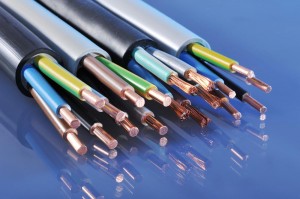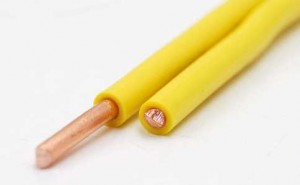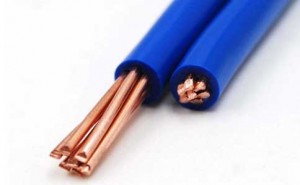According to IEC60228, the cable conductors are divided into four types, the first type, the second type, the fifth type, and the sixth type. The first type is a solid conductor, the second type is a stranded conductor, the first and second types are intended to be used for fixed laying cables, the fifth and sixth types are intended to be used for flexible cables and cords, and the second type is intended for conductors of flexible cables and cords. Six is softer than fifth.
1. Solid conductor:
Metallized or unplated annealed copper wire, uncoated aluminum or aluminum alloy wire for conductor materials.
Solid copper conductors should be of circular cross-section, 25mm2 and above solid copper conductors are only intended for special cables, not for general cables; For solid aluminum conductors, the section 16mm2 and below shall be circular, for 25mm2 and above, it shall be circular in the case of single-core cables, and may be circular or shaped in the case of multi-core cables.
2. Stranded conductor:
In order to increase the flexibility or bendability of the cable, the cable core with a larger cross-section is formed by twisting multiple single wires with a smaller diameter. The wire core twisted by multiple single wires has good flexibility and large curvature. When the wire core is bent, the inner and outer parts of the center line of the wire core can move and compensate each other. When bending, it will not cause plastic deformation of the conductor, so the wire core is soft. Performance and stability are greatly improved.
The stranding form of the core can be divided into two types, regular stranding and irregular stranding. The definition of regular stranding is: the stranding of conductors with regularity, concentricity and successive layers in different directions is called regular stranding. It can also be divided into normal regular stranding and abnormal regular stranding. The latter refers to layer-to-layer The regular stranding with different wire diameters, while the former means that the diameters of the constituent wires are all the same; Regular stranding can also be divided into simple regular stranding and compound regular stranding. The latter means that the wires that make up the regular stranding are not single, but are twisted into strands by thinner wires according to rules, and then twisted into cores. , this kind of twisting is mostly used to move the core of the rubber insulated cable to improve its flexibility. Irregularly stranded (bundled), all constituent wires are twisted in the same direction.
2.1 Non-compact stranded round conductors:
The cross section of stranded round aluminum conductor is generally not less than 10mm2. The single wires in the conductor should have the same nominal diameter, and the number of single wires and DC resistance of the conductor should meet the standards.
2.2 Compression stranded round conductors and shaped conductors:
The cross-section of tightly stranded round aluminum conductors should not be less than 16mm2, the cross-section of stranded copper or aluminum conductors should not be less than 25mm2, the diameter ratio of two different single wires in the same conductor should not exceed 2, and the number of single wires and DC resistance of the conductor should be Comply with standard regulations.
3. Soft conductor:
Conductors shall consist of plated and unplated annealed copper wire. The single wires in the conductor should have the same nominal diameter, the diameter of the single wires in the conductor should not exceed the specified maximum value, the diameter of the sixth conductor is thinner than that of the fifth conductor single wire, and the conductor resistance should not exceed the maximum value specified in the standard.
Email: sales@zhongweicables.com
Mobile/Whatspp/Wechat: +86 17758694970
Post time: Aug-02-2023








